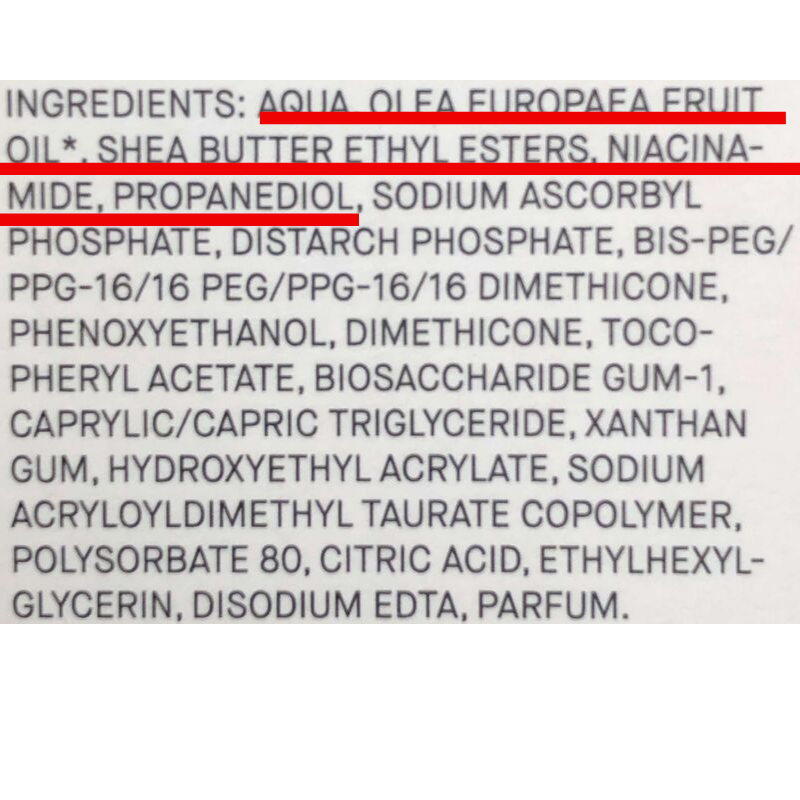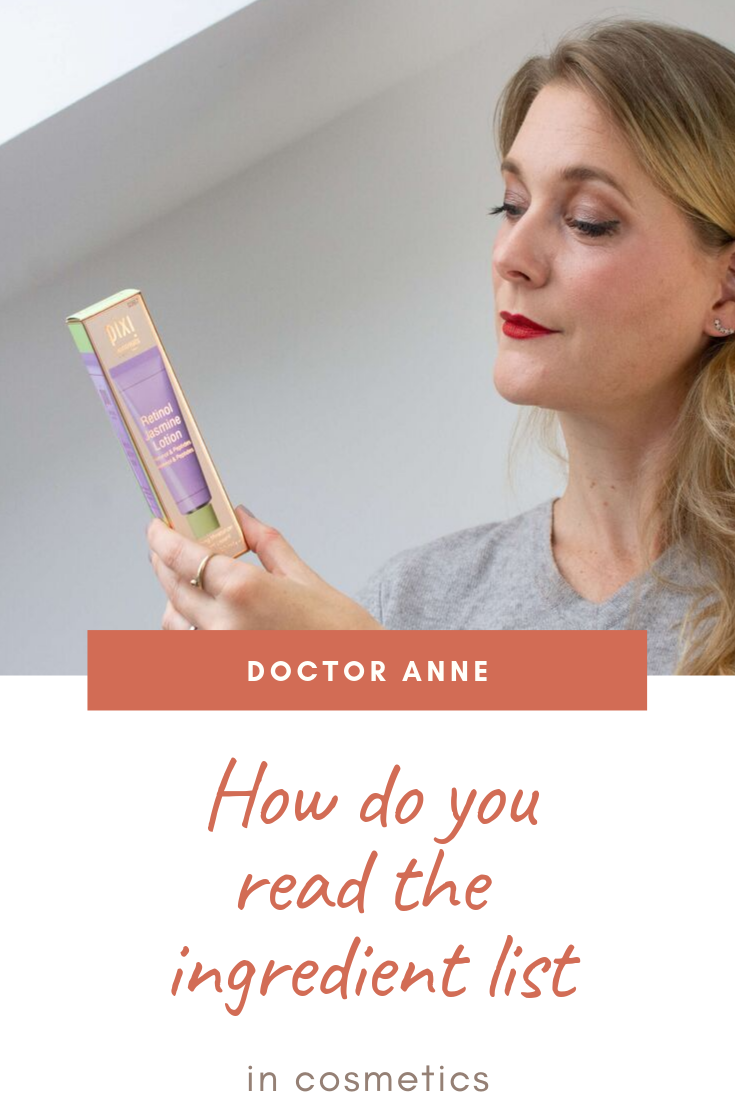If you have been with me any amount of time, you have heard me say one thing: „Learn to read the skincare ingredient list!“
Well, that one and „I need more tea.“ But tea bags aside – because loose tea is the way to go, people – tea bags aside, I am very passionate about reading the skincare ingredient label before purchasing a product.

Yet recently I realized that despite telling you to read the ingredient list over and over again, I never really told you HOW. I mean, I assume you can read, otherwise visiting a blog wouldn’t make much sense, but there is a thin, yet important line between just reading and actually making sense of what you read.
So once you hold the product in your hands and turned it around, because the front is for marketing and the back is where the truth lies, what are you looking for? Mainly two things: WHAT is in my product and HOW MUCH of it! But first…
What NOT to look at in a skincare ingredient list
The total number of ingredients listed
I know it sounds counterintuitive, but more ingredients do not make a better product. At the same time, fewer ingredients don’t make a better product either. Truth is, the amount of ingredients tells you nothing about the efficacy and value of your skincare. You can make a really effective serum using only five things, but at the same time you can make one that does nothing at all, using five different ingredients. Some products need 30 different things to work best, others won’t. Unless you are developing the formula yourself, you’ll never find out.
The Free From claims
I won’t go into too much detail, because I did a dedicated blog post on that topic already (here if you are curious), but unless you have severe allergies or only use vegan products, the „Free From“ claims are not helpful, but misleading. Actually, even if you have severe allergies, you are better off looking through the actual ingredients that relying on „Free From“ claims, so simply ignore them.
Now that we have that out of the way, let’s focus on the other two.
What is in my skincare product?
In theory that should be easy, but it actually isn’t.
First of all, you need to be able to make sense of the names you are reading – Tetradecyl Aminobutyroylvalylaminobutyric Urea Trifluoroacetate anyone? These days you can of course go online and find a ton of websites translating ingredients names for you, which will sometimes help and sometimes lead to even more questions (like „But what peptides in skincare actually do?“ – here is your answer!). Just remember that wherever you go, the person responsible for that website always has two things: An opinion and an agenda. What some may lack though is the expertise, and that is where you need to be careful. Don’t just blindly trust people on the internet – not even me!
The next thing that makes it difficult is when the ingredient list reads: … Caprylic / Capric Triglyceride, Sodium Ascorbate, Tocopherol, Retinol… you´d think it is safe to say that the product contains Retinol, no? Well, actually no. At least not exactly. What these four ingredients together form is RETISTAR®, an encapsulated from of retinol that is released over time and that is probably less effective than just pure retinol.
So what can I do?
Educate yourself on the purpose of ingredient groups (like occlusives, humectants, peptides, antioxidants) and never assume you can really tell how well a product will perform simply by glancing at the ingredient list.
How much of the ingredient is in my skincare product?
Now that you have found out what ingredients are in your product, it is time to see how much of them is actually in there. Because as long as you put a drop of it inside the bottle, it goes on the list, but depending on what it actually is, a drop won’t give you any results. So is there a way to figure out exactly how much of what is in the formula?
Well, not EXACTLY. But there are ways to get a good guess. Ingredients on the packaging must be listed from highest to lowest, which is why Aqua/Water is the first ingredient in most. This rule only applies until you reach the 1% mark though, anything that is at 1% or lower can be listed in random order. That way the brand gets to protect their exact formula.

If you don’t want things to get complicated, a good rule of thumb is to only look at the first 3 to 5 ingredients. They usually make up around 80% of the formula, so if something is listed there, there is probably a decent amount of it present.

A little more advanced is looking for an ingredient you know the concentration of (like Salicylic Acid in The Ordinary 2% Salicylic Acid Serum) and taking that one as a marker. Anything before it is present at more than 2%, anything afterwards at less than 2%. US readers will get that more often, as it is mandatory for OTC drugs like Salicylic Acid and Sunscreen to list the percentage of the actives on the packaging – you don’t get that in the EU. But beware, sometimes there is a % in the product name, as in 5% Granactive Retinoid, which is the description of the ingredient, NOT the amount that is in the final formula – even though it is fine to print 5% Granactive Retinoid on the packaging.

But what if the brand doesn’t tell you any percentage and you still want to know? You need to look for marker ingredients. The best known one is Phenoxyethanol, a preservative that is widely used and is not allowed to be present at more than 1%. So whenever you see it on the list, you can be sure that anything that is listed afterwards is also at less than 1%. Sadly it doesn’t work the other way round, as Phenoxyethanol can be used at way less than 1% if it isn’t the only preservative. If there is no Phenoxyethanol in your product, look for Sodium Hydroxide (usually around 1%), Polyacrylamide (2,5% max, but usually at 1%), Butylene Glycol (between 1 to 10%) or Xanthan Gum, which turns liquids into jelly – anything containing more than 1% will no longer be runny.
Looking at it that way will give you a good understanding of the amount of active in your formula, which is very important. Please note though that again, more doesn’t equal more in terms of effectiveness here. You might need 20% Vitamin C to get good results, but 20% Salicylic Acid would literally burn our face off!
Some ingredients, like peptides, work in very low concentrations. You won’t find them among the first five ingredients of your formula, and you don’t have to in order to get results.
Sounds complicated? Practice! Yes, it is confusing at first, but I promise it will save you a lot of money and time in the long run!



